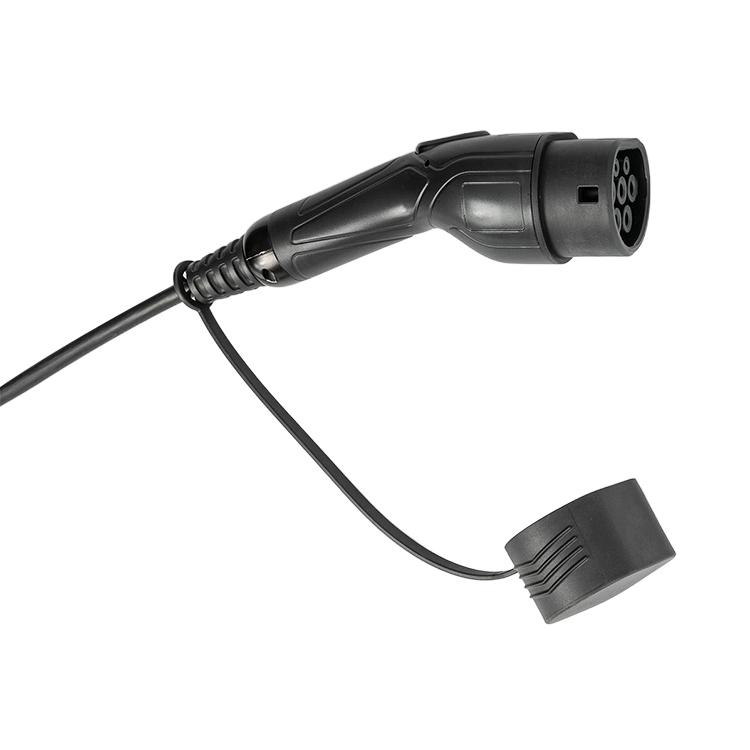Types of EV Charging Cables
2024-07-09
Electric Vehicle (EV) charging cables are essential components for charging electric vehicles, connecting the vehicle to a power source. Here's a detailed look at EV charging cables:
Types of EV Charging Cables
1. Mode 1 Charging
- Description: Basic charging method using a standard household outlet.
- Components: Simple cable with standard connectors.
- Use Case: Home charging, typically for slow charging.
2. Mode 2 Charging
- Description: Uses a standard household outlet but includes an in-cable control and protection device (IC-CPD).
- Components: Cable with IC-CPD to regulate and monitor charging.
- Use Case: Home charging with added safety features.
3. Mode 3 Charging
- Description: Dedicated EV charging stations using specialized connectors.
- Components: Cables with connectors compatible with public and private charging stations.
- Use Case: Public charging stations, home wall boxes, commercial locations.
4. Mode 4 Charging
- Description: Direct Current (DC) fast charging using a dedicated charging station.
- Components: Cables permanently attached to the charging station.
- Use Case: Fast charging at commercial locations, highways, and EV hubs.
Connectors and Standards
1. Type 1 (SAE J1772)
- Region: North America
- Description: Single-phase connector used for AC charging.
- Applications: Residential and public charging stations.
2. Type 2 (IEC 62196, Mennekes)
- Region: Europe
- Description: Three-phase connector used for AC charging.
- Applications: Widely used in Europe for both residential and public charging.
3. Combined Charging System (CCS)
- Variants: CCS1 (North America) and CCS2 (Europe)
- Description: Combines Type 1 or Type 2 with two additional pins for fast DC charging.
- Applications: Universal standard for fast charging.
4. CHAdeMO
- Region: Japan and other regions
- Description: DC fast charging standard.
- Applications: Fast charging stations, compatible with several Japanese and Korean EVs.
5. Tesla Connector
- Region: North America and globally
- Description: Proprietary connector used by Tesla.
- Applications: Tesla Supercharger network and home chargers.
Cable Specifications and Considerations
1. Cable Length
- Variety: Typically ranges from 5 to 10 meters (16 to 33 feet).
- Consideration: Longer cables provide flexibility but can be less convenient to handle.
2. Cable Thickness
- Dependent on: Charging power and current rating.
- Consideration: Thicker cables can handle higher currents but may be less flexible.
3. Safety Features
- Insulation: High-quality insulation to prevent electric shocks.
- Durability: Weather-resistant and robust materials to withstand outdoor use.
- Temperature Management: Some cables include cooling systems for high-power charging.
4. Charging Speed
- Slow Charging: Up to 3.7 kW (Mode 1 and Mode 2).
- Fast Charging: 7 kW to 22 kW (Mode 3).
- Rapid Charging: 50 kW and above (Mode 4).
Advantages of EV Charging Cables
1. Convenience: Allows EV owners to charge their vehicles at home, work, or public stations.
2. Flexibility: Various lengths and connector types accommodate different charging needs and locations.
3. Safety: Built-in safety features ensure safe and reliable charging.
4. Efficiency: High-quality cables can improve charging efficiency and reduce energy loss.
Applications and Use Cases
1. Residential Charging: Home charging stations or standard outlets for overnight charging.
2. Public Charging: Public charging stations in parking lots, shopping centers, and urban areas.
3. Commercial and Fleet Charging: Dedicated charging infrastructure for commercial fleets and workplaces.
4. Long-Distance Travel: Fast charging stations along highways for quick recharges during long trips.
Future Trends
1. Wireless Charging: Development of inductive charging systems for convenient, cable-free charging.
2. Higher Power Levels: Advancements in cable technology to support higher power fast charging.
3. Smart Charging: Integration of smart features for energy management and grid balancing.



